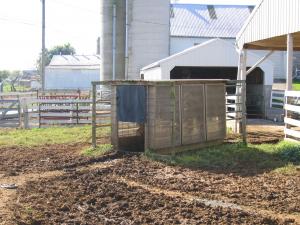eOrganic author:
Jim Riddle, University of Minnesota
Introduction
A core principle of organic agriculture is the adoption of best sustainable and ecologically sound practices and inputs as they become available. Organic agricultural research is used to assess and develop emerging practices and inputs. It is a dynamic field with new information available regularly. Organic producers, handlers, and consumers all receive benefits from research on new methods, practices, varieties, and breeds.
In recent years, federal, state, university, and private funds have become available for organic agricultural research. Some of the grant funds require that research be conducted on certified organic or transitional land. For example, the Integrated Organic Program of USDA currently requires that all research be done on land that is either certified or transitioning to organic, thus the ability of researchers to get all or a portion of their research station certified has a direct bearing on their eligibility for funding.
Dairy flytrap. Photo credit: Jim Riddle, University of Minnesota.
Certification Overview
Under the National Organic Program (NOP) Final Rule, “organic production” is defined as “a production system that is managed to respond to site-specific conditions by integrating cultural, biological, and mechanical practices that foster cycling of resources, promote ecological balance, and conserve biodiversity.”
All organic farmers and handlers who sell over $5,000/year of organic products must be certified. Retailers do not have to be certified. Handlers who use the word “organic” only on the ingredient panel do not have to be certified. Handlers, such as warehouses, that do not repackage organic products do not have to be certified.
Organic certification is conducted by accredited certifying agents. There are presently 95 certifying agents accredited by the USDA to implement the National Organic Program regulation. Accreditation is issued for crop, wild crop, livestock, and/or handler certification. A list of accredited certifying agents is at http://www.ams.usda.gov/nop.
The organic certification process begins with the 36-month transition of the land, when no prohibited materials are applied. Records need to be maintained to document the transition. The operator chooses an accredited certification agency and completes an organic system plan (OSP), including field maps and field histories for all fields to be certified. The OSP should describe the proactive strategies used to prevent problems, and include a list or description of all planned inputs and practices. The certification agency assigns an inspector, who evaluates all fields, borders, buildings, equipment, and records. The inspector submits a report to the certifier, who makes the certification decision.
In order to maintain certification, an operator must follow the operation’s OSP, comply with NOP organic production and handling standards, use only approved substances, pay annual certification fees, undergo an annual on-site inspection, and address all issues of concern identified by the certification agency. As with any certified operation, it is very important for organic researchers to stay in contact with their certifier, especially as new practices or inputs are being considered.
Related eOrganic articles:
- Benefits and Challenges of Organic Research Sites and Facilities
- Research Variances of Certified Organic Research Sites and Facilities
- Resources for Organic Certification of Organic Research Sites and Facilities
- Q&A for Organic Certification of Research Sites and Facilities
Further Reading
- Agricultural Marketing Service - National Organic Program [Online]. Agricultural Marketing Service. United States Department of Agriculture. Available at: http://www.ams.usda.gov/AMSv1.0/ams.fetchTemplateData.do?template=Templa... (verified 18 Dec 2008).




